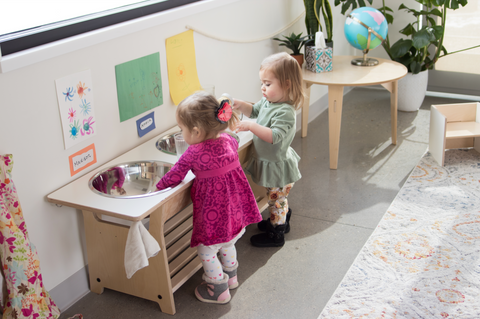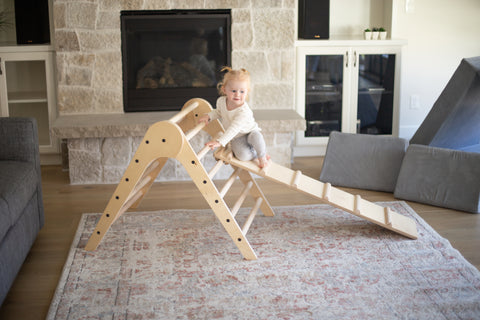What is Montessori?
The Montessori Method is a pedagogical philosophy developed by Italian physician and educator Maria Montessori. Montessori schools emphasize student-directed learning, and feature mixed-age classrooms, child-sized furnishings, and a variety of manipulative learning materials. The Montessori Method views children as naturally eager to learn and capable of being self-motivated based on their own interests and inner motivation. Lessons in Montessori environments build on the child's innate curiosity, allowing them to learn at their own pace.
If you'd like to learn more about Montessori, start with the post: What is the Montessori Method?
The Montessori Method is one of many early childhood educational philosophies to choose from! With Montessori as a starting point, we compared and contrasted some of the most popular pedagogies in order to empower families to make the best choice for them.

Waldorf
Waldorf is another popular pedagogy that, like Montessori, prioritizes following children’s natural development and individual growth through hands-on exploration of their environment.
Find out more: Montessori vs Waldorf
Reggio Emilia
Reggio Emilia, like Montessori, is an educational philosophy that originated in Italy and can now be found in early childhood programs around the world.
Find out more: Montessori vs Reggio Emilia
Pikler
The Pikler Method was founded by Dr. Emmi Pikler, a female physician in the early 1900s who, like Maria Montessori, pioneered a child-centered educational approach that emphasized natural development and gross motor movement.
Find out more: Montessori vs Pikler

RIE
Resources for Infant Educarers (RIE) views infants as unique and worthy human beings, similar to the Montessori Method. It encourages interactions that demonstrate respect and support infants' development into secure, independent, and competent individuals.
Find out more: Montessori and Resources for Infant Educarers (RIE)
We'll be adding more educational philosophies to this collection!
Leave a comment letting us know which pedagogies you'd like us to compare next.




This is an excellent comparison of Montessori and other early childhood education ideas! It’s fascinating to see how different approaches shape a child’s learning journey. Montessori emphasizes hands-on learning and fostering independence, while other methods offer unique benefits. This is a well-balanced article for parents seeking the best educational fit for their children!"
Shima on